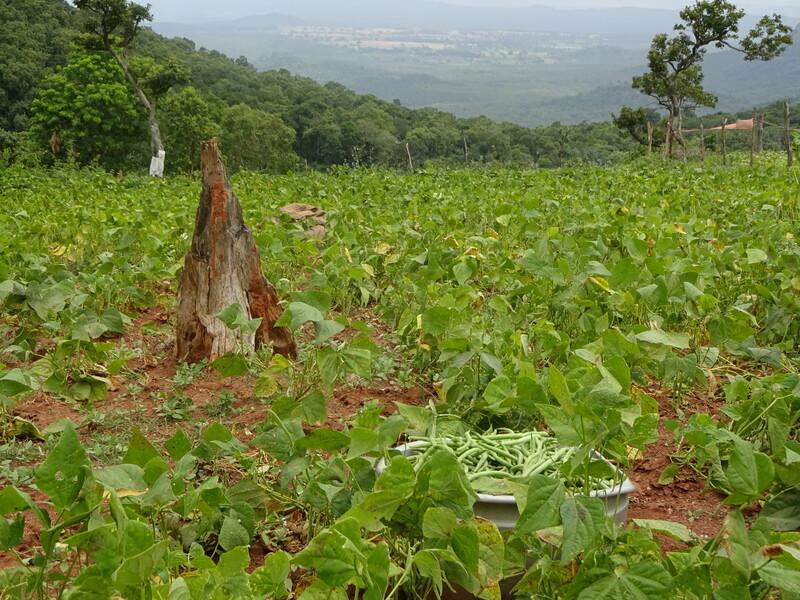-
 Sathyamangalam CA Monitoring Plan
Sathyamangalam CA Monitoring Plan It is a document detailing about the monitoring plan of the conservation actions. It includes BFEs as to be working as onlookers as well community resource persons with regard to Conservation Agreements.
-
 Work Plan for Conservation Agreements in the Sathyamangalam Tiger Reserve (2017-19) Keystone Foundation
Work Plan for Conservation Agreements in the Sathyamangalam Tiger Reserve (2017-19) Keystone Foundation It is a work plan describing the activities in the project period. It says about targets , out puts and product deliverables from each activity.
-
 Consent form for participation in CSP Study
Consent form for participation in CSP Study It is a word document containing the consent to be participating in the study.
-
 CSP-People and Parks - Conservation in Local Innovative ways
CSP-People and Parks - Conservation in Local Innovative ways It is a ppt which explains about the Conservation Stewards Programme in gist in the STR. As in its objectives, goals, actions etc
-
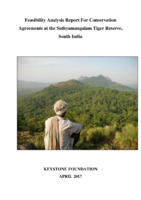 Annexures of Feasibility Analysis Report for Sathyamangalam Tiger Reserve
Annexures of Feasibility Analysis Report for Sathyamangalam Tiger Reserve It is a document having the annexures mentioned in the feasibility analyasis report of Sathyamangalam area.
-
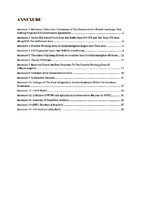 Feasibility Analysis Report For Conservation Agreements at the Sathyamangalam Tiger Reserve, South India
Feasibility Analysis Report For Conservation Agreements at the Sathyamangalam Tiger Reserve, South India It is a report on feasibility analysis of Sathyamangalam Tiger Reserve about the possibility of undertaking conservation Agreements. It includes details on ecological, social and political context of the area. STR was one amongst the three areas considered for Conservation Agreements, other two includes Nilambur and Wayanad.
-
 A short Field Guide on Conservation Agreement
A short Field Guide on Conservation Agreement The document outlines a comprehensive guide for implementing conservation agreements, emphasizing the importance of community engagement and representation, particularly for marginalized groups such as women and youth. It discusses the necessity of creating mechanisms for transparent communication and the need for tailored strategies to ensure equitable participation in decision-making processes. The document highlights the significance of monitoring both biodiversity outcomes and socio-economic conditions to adapt agreements effectively over time. It also stresses the importance of developing long-term financing strategies to sustain conservation efforts, including the establishment of trust funds and exploring ecosystem service payment markets. Overall, the guide serves as a framework for fostering collaboration between communities and conservation investors to achieve mutual benefits while protecting natural resources.
It is a short field guide which encompasses all components of Conservation Agreement. It also adds few field level lessons and inputs on each componnets.
-
 Training Module on Sustainability of Conservation Agreement
Training Module on Sustainability of Conservation Agreement It is a training module which explains on how to sustain the project even after the agreed time period. Sustainability in terms of finances and social structure already built through the working years.
-
 Training Module on Monitoring Phase of Conservation Agreement
Training Module on Monitoring Phase of Conservation Agreement It is a training module which explains about how to monitor the agreed actions and find any discrepancies.
-
 Training Module on Implementation
Training Module on Implementation It is a training module which explains on how to implement the designed and negotiated conservation agreements. Principles to be followed while implementation etc.
-
 Training Module on Design and Negotiation
Training Module on Design and Negotiation It ia a training module which details about the design of conservation agreement- as what all has to be included in it as benefits and conservation actions. For the same how to negotiate between facilitators agenda and communities agenda.
-
 Training Module on Engagement Phase of Conservation Agreement
Training Module on Engagement Phase of Conservation Agreement It is a training module which explains about the engagement phase of conservation agreement. It is the phase where community is engaged.
-
 Training Module on Feasibility Analysis of Conservation Agreement
Training Module on Feasibility Analysis of Conservation Agreement It is a training module explaining the first step of Conservation Agreement- Feasibility Analysis. It is done to see whether, Conservation Agreement works in an area or not.
-
 Training Module on Introduction to Conservation Agreement
Training Module on Introduction to Conservation Agreement It is a training module explaining about what is Conservation Agreement
-
 Conservation Agreement Guide for Trainers From CI
Conservation Agreement Guide for Trainers From CI It is a training document which guides on how to handle a workshop on Conservation Agreements. It guides the trainers on each module of the training.
-
 Individual Household level details of six villages in Dhimbam
Individual Household level details of six villages in Dhimbam This document holds information about the number of people in a village involved in various livelihood activities like agriculture, NTFP collection and Grazing. These details were collected to get an estimate about what percentage of people are involved in each category of activity so that for Conservation Agreement, a baseline can be generated.List of people in the village was collected from the Anganwadi. Other details were filled with the help of BFEs as to their knowlegde about the village residents.
-
 Consolidated Household level description of six villages in Dhimbam
Consolidated Household level description of six villages in Dhimbam This document holds information about the number of people in a village involved in various livelihood activities like agriculture, NTFP collection and Grazing. These details were collected to get an estimate about what percentage of people are involved in each category of activity so that for Conservation Agreement, a baseline can be generated. It was filled with the help of BFEs as to their knowlegde about the village residents.
-
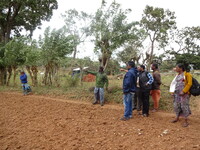 Demonstration on Inspecting the Field after PGS orientation meeting
Demonstration on Inspecting the Field after PGS orientation meeting After the PGS orientation meeting, how to do field inspection was demonstrated in one of the farmers field.
-
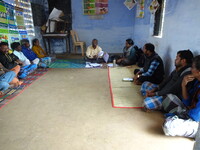 PGS Orientation Meeting in Mavanatham
PGS Orientation Meeting in Mavanatham Organic certification was one of the Benefits in Conservation Agreement. Hence a meeting was called to create an awareness about PGS certification and the process, procedures.
-
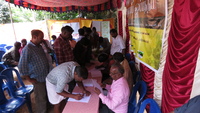 Village Communities Signing Conservation Agreement
Village Communities Signing Conservation Agreement After 7 months of continous engagement phase with the 6 villages, few from each village came forward to be part of the conservation agreement. In consensus with the all the villages,a date was fixed to sign the agreement. This is the picture from that event and one individual from a family signed the agreement, and Robert Leo signed as a representative from Keystone Foundation.
-
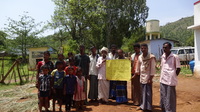 Conservation Agreement Designing Phase, Ramaranai
Conservation Agreement Designing Phase, Ramaranai This was a photograph taken during desiging phase of conservation agreement. After CA was drafted, the people who are ready to proceed with the agreement were got together and the photograph was taken. Ramaranai was the only kurumba village amongst other 5 irula villages under Conservation Agreement. Also this was the only village where whole village agreed to be part of conservation agreement.
-
 Conservation Agreement Designing Phase, Mavanatham
Conservation Agreement Designing Phase, Mavanatham This was a photograph taken during desiging phase of conservation agreement. After CA was drafted, the people who are ready to proceed with the agreement were got together and the photograph was taken. Mavanatham wanted to try with very few people in the beginning and later on many added in.
-
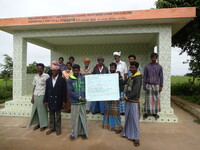 Conservation Agreement Designing phase, Itterai
Conservation Agreement Designing phase, Itterai This was a photograph taken during desiging phase of conservation agreement. After CA was drafted, the people who are ready to proceed with the agreement were got together and the photograph was taken. Itterai was one of the toughest village to handle in terms of getting together people. As houses are very far and in different directions.
-
 Conservation Agreement Designing phase, Galidhimbam
Conservation Agreement Designing phase, Galidhimbam This was a photograph taken during desiging phase of conservation agreement. After CA was drafted, the people who are ready to proceed with the agreement were got together and the photograph was taken. Galidhimbam had too many doubts in the beginning around conservation agreements. In the later times, Senior people like Anita came in and settled the doubts to take ahead the conservation agreement.
-
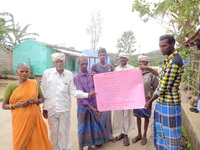 Conservation Agreement Designing phase, Thadasalatty
Conservation Agreement Designing phase, Thadasalatty This was a photograph taken during desiging phase of conservation agreement. After CA was drafted, the people who are ready to proceed with the agreement were got together and the photograph was taken. Thadasalatty showed much enthusiasm though in the pic not all people are present.
 Sathyamangalam CA Monitoring Plan It is a document detailing about the monitoring plan of the conservation actions. It includes BFEs as to be working as onlookers as well community resource persons with regard to Conservation Agreements.
Sathyamangalam CA Monitoring Plan It is a document detailing about the monitoring plan of the conservation actions. It includes BFEs as to be working as onlookers as well community resource persons with regard to Conservation Agreements. Work Plan for Conservation Agreements in the Sathyamangalam Tiger Reserve (2017-19) Keystone Foundation It is a work plan describing the activities in the project period. It says about targets , out puts and product deliverables from each activity.
Work Plan for Conservation Agreements in the Sathyamangalam Tiger Reserve (2017-19) Keystone Foundation It is a work plan describing the activities in the project period. It says about targets , out puts and product deliverables from each activity. Consent form for participation in CSP Study It is a word document containing the consent to be participating in the study.
Consent form for participation in CSP Study It is a word document containing the consent to be participating in the study. CSP-People and Parks - Conservation in Local Innovative ways It is a ppt which explains about the Conservation Stewards Programme in gist in the STR. As in its objectives, goals, actions etc
CSP-People and Parks - Conservation in Local Innovative ways It is a ppt which explains about the Conservation Stewards Programme in gist in the STR. As in its objectives, goals, actions etc Annexures of Feasibility Analysis Report for Sathyamangalam Tiger Reserve It is a document having the annexures mentioned in the feasibility analyasis report of Sathyamangalam area.
Annexures of Feasibility Analysis Report for Sathyamangalam Tiger Reserve It is a document having the annexures mentioned in the feasibility analyasis report of Sathyamangalam area. Feasibility Analysis Report For Conservation Agreements at the Sathyamangalam Tiger Reserve, South India It is a report on feasibility analysis of Sathyamangalam Tiger Reserve about the possibility of undertaking conservation Agreements. It includes details on ecological, social and political context of the area. STR was one amongst the three areas considered for Conservation Agreements, other two includes Nilambur and Wayanad.
Feasibility Analysis Report For Conservation Agreements at the Sathyamangalam Tiger Reserve, South India It is a report on feasibility analysis of Sathyamangalam Tiger Reserve about the possibility of undertaking conservation Agreements. It includes details on ecological, social and political context of the area. STR was one amongst the three areas considered for Conservation Agreements, other two includes Nilambur and Wayanad. A short Field Guide on Conservation Agreement The document outlines a comprehensive guide for implementing conservation agreements, emphasizing the importance of community engagement and representation, particularly for marginalized groups such as women and youth. It discusses the necessity of creating mechanisms for transparent communication and the need for tailored strategies to ensure equitable participation in decision-making processes. The document highlights the significance of monitoring both biodiversity outcomes and socio-economic conditions to adapt agreements effectively over time. It also stresses the importance of developing long-term financing strategies to sustain conservation efforts, including the establishment of trust funds and exploring ecosystem service payment markets. Overall, the guide serves as a framework for fostering collaboration between communities and conservation investors to achieve mutual benefits while protecting natural resources. It is a short field guide which encompasses all components of Conservation Agreement. It also adds few field level lessons and inputs on each componnets.
A short Field Guide on Conservation Agreement The document outlines a comprehensive guide for implementing conservation agreements, emphasizing the importance of community engagement and representation, particularly for marginalized groups such as women and youth. It discusses the necessity of creating mechanisms for transparent communication and the need for tailored strategies to ensure equitable participation in decision-making processes. The document highlights the significance of monitoring both biodiversity outcomes and socio-economic conditions to adapt agreements effectively over time. It also stresses the importance of developing long-term financing strategies to sustain conservation efforts, including the establishment of trust funds and exploring ecosystem service payment markets. Overall, the guide serves as a framework for fostering collaboration between communities and conservation investors to achieve mutual benefits while protecting natural resources. It is a short field guide which encompasses all components of Conservation Agreement. It also adds few field level lessons and inputs on each componnets. Training Module on Sustainability of Conservation Agreement It is a training module which explains on how to sustain the project even after the agreed time period. Sustainability in terms of finances and social structure already built through the working years.
Training Module on Sustainability of Conservation Agreement It is a training module which explains on how to sustain the project even after the agreed time period. Sustainability in terms of finances and social structure already built through the working years. Training Module on Monitoring Phase of Conservation Agreement It is a training module which explains about how to monitor the agreed actions and find any discrepancies.
Training Module on Monitoring Phase of Conservation Agreement It is a training module which explains about how to monitor the agreed actions and find any discrepancies. Training Module on Implementation It is a training module which explains on how to implement the designed and negotiated conservation agreements. Principles to be followed while implementation etc.
Training Module on Implementation It is a training module which explains on how to implement the designed and negotiated conservation agreements. Principles to be followed while implementation etc. Training Module on Design and Negotiation It ia a training module which details about the design of conservation agreement- as what all has to be included in it as benefits and conservation actions. For the same how to negotiate between facilitators agenda and communities agenda.
Training Module on Design and Negotiation It ia a training module which details about the design of conservation agreement- as what all has to be included in it as benefits and conservation actions. For the same how to negotiate between facilitators agenda and communities agenda. Training Module on Engagement Phase of Conservation Agreement It is a training module which explains about the engagement phase of conservation agreement. It is the phase where community is engaged.
Training Module on Engagement Phase of Conservation Agreement It is a training module which explains about the engagement phase of conservation agreement. It is the phase where community is engaged. Training Module on Feasibility Analysis of Conservation Agreement It is a training module explaining the first step of Conservation Agreement- Feasibility Analysis. It is done to see whether, Conservation Agreement works in an area or not.
Training Module on Feasibility Analysis of Conservation Agreement It is a training module explaining the first step of Conservation Agreement- Feasibility Analysis. It is done to see whether, Conservation Agreement works in an area or not. Training Module on Introduction to Conservation Agreement It is a training module explaining about what is Conservation Agreement
Training Module on Introduction to Conservation Agreement It is a training module explaining about what is Conservation Agreement Conservation Agreement Guide for Trainers From CI It is a training document which guides on how to handle a workshop on Conservation Agreements. It guides the trainers on each module of the training.
Conservation Agreement Guide for Trainers From CI It is a training document which guides on how to handle a workshop on Conservation Agreements. It guides the trainers on each module of the training. Individual Household level details of six villages in Dhimbam This document holds information about the number of people in a village involved in various livelihood activities like agriculture, NTFP collection and Grazing. These details were collected to get an estimate about what percentage of people are involved in each category of activity so that for Conservation Agreement, a baseline can be generated.List of people in the village was collected from the Anganwadi. Other details were filled with the help of BFEs as to their knowlegde about the village residents.
Individual Household level details of six villages in Dhimbam This document holds information about the number of people in a village involved in various livelihood activities like agriculture, NTFP collection and Grazing. These details were collected to get an estimate about what percentage of people are involved in each category of activity so that for Conservation Agreement, a baseline can be generated.List of people in the village was collected from the Anganwadi. Other details were filled with the help of BFEs as to their knowlegde about the village residents. Consolidated Household level description of six villages in Dhimbam This document holds information about the number of people in a village involved in various livelihood activities like agriculture, NTFP collection and Grazing. These details were collected to get an estimate about what percentage of people are involved in each category of activity so that for Conservation Agreement, a baseline can be generated. It was filled with the help of BFEs as to their knowlegde about the village residents.
Consolidated Household level description of six villages in Dhimbam This document holds information about the number of people in a village involved in various livelihood activities like agriculture, NTFP collection and Grazing. These details were collected to get an estimate about what percentage of people are involved in each category of activity so that for Conservation Agreement, a baseline can be generated. It was filled with the help of BFEs as to their knowlegde about the village residents. Demonstration on Inspecting the Field after PGS orientation meeting After the PGS orientation meeting, how to do field inspection was demonstrated in one of the farmers field.
Demonstration on Inspecting the Field after PGS orientation meeting After the PGS orientation meeting, how to do field inspection was demonstrated in one of the farmers field. PGS Orientation Meeting in Mavanatham Organic certification was one of the Benefits in Conservation Agreement. Hence a meeting was called to create an awareness about PGS certification and the process, procedures.
PGS Orientation Meeting in Mavanatham Organic certification was one of the Benefits in Conservation Agreement. Hence a meeting was called to create an awareness about PGS certification and the process, procedures. Village Communities Signing Conservation Agreement After 7 months of continous engagement phase with the 6 villages, few from each village came forward to be part of the conservation agreement. In consensus with the all the villages,a date was fixed to sign the agreement. This is the picture from that event and one individual from a family signed the agreement, and Robert Leo signed as a representative from Keystone Foundation.
Village Communities Signing Conservation Agreement After 7 months of continous engagement phase with the 6 villages, few from each village came forward to be part of the conservation agreement. In consensus with the all the villages,a date was fixed to sign the agreement. This is the picture from that event and one individual from a family signed the agreement, and Robert Leo signed as a representative from Keystone Foundation. Conservation Agreement Designing Phase, Ramaranai This was a photograph taken during desiging phase of conservation agreement. After CA was drafted, the people who are ready to proceed with the agreement were got together and the photograph was taken. Ramaranai was the only kurumba village amongst other 5 irula villages under Conservation Agreement. Also this was the only village where whole village agreed to be part of conservation agreement.
Conservation Agreement Designing Phase, Ramaranai This was a photograph taken during desiging phase of conservation agreement. After CA was drafted, the people who are ready to proceed with the agreement were got together and the photograph was taken. Ramaranai was the only kurumba village amongst other 5 irula villages under Conservation Agreement. Also this was the only village where whole village agreed to be part of conservation agreement. Conservation Agreement Designing Phase, Mavanatham This was a photograph taken during desiging phase of conservation agreement. After CA was drafted, the people who are ready to proceed with the agreement were got together and the photograph was taken. Mavanatham wanted to try with very few people in the beginning and later on many added in.
Conservation Agreement Designing Phase, Mavanatham This was a photograph taken during desiging phase of conservation agreement. After CA was drafted, the people who are ready to proceed with the agreement were got together and the photograph was taken. Mavanatham wanted to try with very few people in the beginning and later on many added in. Conservation Agreement Designing phase, Itterai This was a photograph taken during desiging phase of conservation agreement. After CA was drafted, the people who are ready to proceed with the agreement were got together and the photograph was taken. Itterai was one of the toughest village to handle in terms of getting together people. As houses are very far and in different directions.
Conservation Agreement Designing phase, Itterai This was a photograph taken during desiging phase of conservation agreement. After CA was drafted, the people who are ready to proceed with the agreement were got together and the photograph was taken. Itterai was one of the toughest village to handle in terms of getting together people. As houses are very far and in different directions. Conservation Agreement Designing phase, Galidhimbam This was a photograph taken during desiging phase of conservation agreement. After CA was drafted, the people who are ready to proceed with the agreement were got together and the photograph was taken. Galidhimbam had too many doubts in the beginning around conservation agreements. In the later times, Senior people like Anita came in and settled the doubts to take ahead the conservation agreement.
Conservation Agreement Designing phase, Galidhimbam This was a photograph taken during desiging phase of conservation agreement. After CA was drafted, the people who are ready to proceed with the agreement were got together and the photograph was taken. Galidhimbam had too many doubts in the beginning around conservation agreements. In the later times, Senior people like Anita came in and settled the doubts to take ahead the conservation agreement. Conservation Agreement Designing phase, Thadasalatty This was a photograph taken during desiging phase of conservation agreement. After CA was drafted, the people who are ready to proceed with the agreement were got together and the photograph was taken. Thadasalatty showed much enthusiasm though in the pic not all people are present.
Conservation Agreement Designing phase, Thadasalatty This was a photograph taken during desiging phase of conservation agreement. After CA was drafted, the people who are ready to proceed with the agreement were got together and the photograph was taken. Thadasalatty showed much enthusiasm though in the pic not all people are present.
